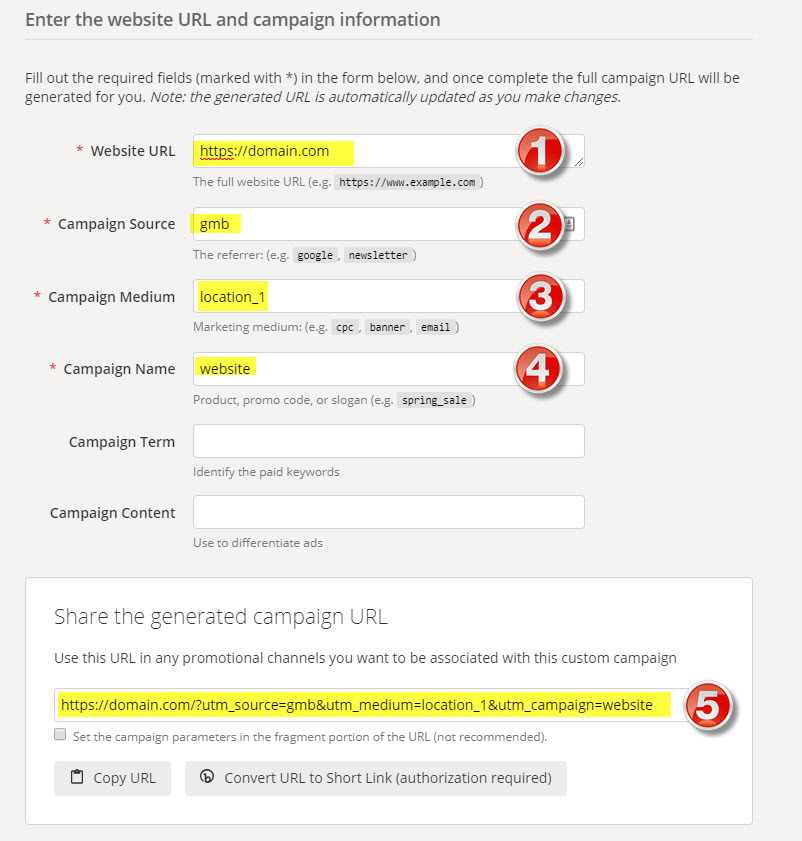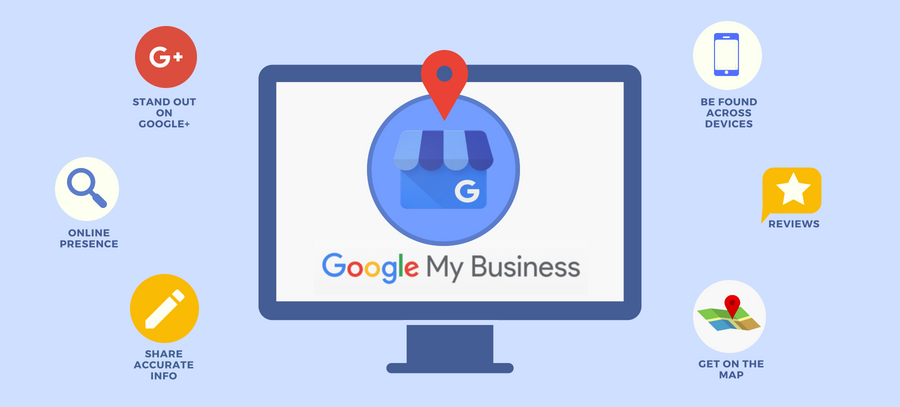A Comprehensive Guide to Setting Up UTM Parameters for Conversions Tracking
UTM Codes are one of the most efficient ways of tracking digital campaigns, be it marketing ones or anything else. Most people use UTM parameters to measure traffic sources, however, there are many other applications that can be used to your advantage. Let’s dive in further and see what else you can track with their […]

UTM Codes are one of the most efficient ways of tracking digital campaigns, be it marketing ones or anything else.
Most people use UTM parameters to measure traffic sources, however, there are many other applications that can be used to your advantage. Let’s dive in further and see what else you can track with their help.
What is a UTM Parameter and how to set up one?
UTM stands as an abbreviation for Urchin Tracking Module, and simply put it is a variant of a URL parameter, that allows a marketer to track traffic and user behaviour and their parts in the overall success of a digital campaign.
They were first introduced by Urchin, which is the predecessor of Google Analytics. Hence, nowadays, they are mostly used and supported by Google Analytics.
UTM parameters are always attached to the back end of a URL. An example of a UTM parameter in an URL looks like this:
https://www.yourwebsitehere.com/page?utm_content=buffercf3b2&utm_medium=social2&utm_term=instagram.com&utm_campaign1=buffer
There are five types of UTM parameters. They can be used simultaneously and in random order. That wouldn’t influence the results. They are:
- UTM_medium (Tells you the type of link the user has used to get to your website. This can be a link from an email, referral, CPC, display add, etc.)
- UTM_source (Tells you which site was the one where the user found out about your website and visited.)
- UTM_campaign (Tells you whether the link has come from one of your campaigns and which one.)
- UTM_content (This element tells you whether the user has clicked on a button, a banner, a “Read More” text or a text link to visit your website.)
- UTM_term (This element identifies what search terms were used to locate the link by the user.)
How to Set up a UTM Parameter

Although it might sound like a no-brainer, the first thing to include is the URL itself. No matter what UTM parameters you attach, if you forget the URL, you are getting nowhere.
Example: https://yourwebsite.com
Typically, after you have your URL, you need to include a parameter. The one mostly used a the front is the utm_source one.
All of the parameters mentioned in the section above start with the “utm_” part. Make sure to use this prefix with them when including them in the url.
1. UTM_source
The most common example of a UTM_source is utm_source=google or utm_source=bing
2. UTM_medium
Examples: utm_medium=social or utm_medium=email, or utm_medium=social
3. UTM_campaign
The campaign name here can be changed regarding which campaign you are tracking with this link.
Examples: utm_campaign=2021-summer-hip-hop-campaign or utm_campaign=2021-facebook-campaign-baseball-group
4. UTM_content
This is an optional parameter that not everybody includes in their links. It is mostly used when conducting A/B testing, as it can clearly differentiate which version brings more traffic.
Examples: utm_content=textlink or utm_content=banner or utm_content=button
5. UTM_term
This is optional. The UTM_term suffix is very useful when you want to see whether a certain keyword is performing well or not in a specific CPC campaign.
Examples: utm_term=basketball+shoes or utm_term=[insert keyword one here]+[Insert keyword two here]
Great, now you know what the different parameters do. So how do we stitch everything together in a single URL?
Building your UTM parameters into a single URL

To create a URL with UTM parameters, you can use a wide variety of tools or create your own in Microsoft Office Excel. Google also offers official URL-building tools which you can find: Here.
Aside from that, if you want to create the table yourself in Excel, this is how it should look like.
| *Required | Example (fill the text in the rows below for your website) | Enter Details here |
| URL* | https://yourwebsitehere.com | here you can insert any details you need to clarify for yourself |
| UTM Source* | yourwebsite_blog | |
| UTM Medium* | social | |
| Name of the Campaign* | Summer_campaign | |
| Term | ||
| Campaign Content | ||
| Output | https://yourwebsitehere.com?utm_source=yourwebsite_blog&utm_medium=social&utm_campaign=summer_campaign | This is the tracking URL that you can use. |
What to do once you have the UTMs attached to your URL?
By having completed this stage, you will get to know which placements perform best, and be able to properly distribute or adjust the spending budget of your campaigns.
You can review this in Google Analytics by going to the Acquisitions menu, and then clicking on “Campaigns”.
It would be best for your business if you take the time and set up some goals in GA. This is a fairly simple process.
How to Set up Google Analytics Goals
Step 1. Go in Google Analytics, log in to your account, go to the Admin panel, find where your website is, and on the right side of the screen you should see a flag icon, and text “Goals” next to it. Click on it.
Step 2. Click on the “+ NEW GOAL” button
Step 3. A very simple wizard would walk you through the process of setting up the goal. Different conversions require different information. You can use a pre-determined template which google gladly shares. Once you are ready with this step, press “continue”, and voila.
Once you’ve done all that, you’ve properly set up UTM tracking URLs, as well as Google Analytics goals. Now let’s find out what else aside from traffic you can track with them.
#1 Ebooks

If your business allows you to write any guides, courses, or even ebooks in the form of .pdf, .mobi, or any format compatible with mobile devices, kindle, or desktop, you should include URL placements in those books.
You can promote products, your website, other courses, anything really. But the important part here is to know where the traffic is coming from. By adding a few UTM tags to the links in the book, you can differentiate from which book the visitors are coming and how effectively is this traffic converting, since it is warm. Here are two examples:
- https://yourwebsite.com/?utm_source=yourebook&utm_medium=ebook1&utm_campaign=Ebookoncooking&utm_content=textlink
- https://yourwebsite.com/?utm_source=yourebook&utm_medium=ebook1&utm_campaign=Ebookoncooking&utm_content=button
Furthermore, you can even distinguish where exactly are your readers clicking in order to get to your website.
#2 Banners and Logos
If you are using logos and banners in order to gain traffic, you can easily use UTM parameters to your advantage and keep the count of your visitors.
It is more important than most people think, to know which button, banner, or logo has led your visitors to a certain webpage. For example, if you have written a blog post and have included a clickable banner, logo, and a few text links, you would want to know from which one the visitors are coming in.
For that reason, your banner URLs should also include UTM prefixes. Here are two examples of how your URLs might look like:
- https://yourwebsite.com/?utm_source=blog&utm_medium=link&utm_campaign=blogcampaign&utm_content=Header-banner
- https://yourwebsite.com/?utm_source=blog&utm_medium=link&utm_campaign=blogcampaign&utm_content=text-link
#3 Use UTM parameters in A/B Testing

To be honest, this should have been put on the top of the list since UTM parameters were initially developed for A/B testing and nothing else.
That makes them the perfect tool to let you know whether control or a variation version of your website is performing better in certain aspects with the same audience. You can even test whether the audience of your email campaign is responding better to certain nudges than a CPC targeted audience.
You can do that by using the utm_source tag in the URLs.
#4 UTM Parameters in Newsletters
In newsletters, you would most often be using utm_source=newsletter in order to have a good understanding of how many people are following through there. Moreover, if you have more than just one series, you should also differentiate them and see which ones perform best.
Aside from that, since newsletters mostly consist of text, you can test out whether people click on buttons, headings, or “Read More” texts at the end of the letter. In order to do so, you would need to use the utm_content parameter in your URLs.
Examples:
- https://yourwebsite.com/?utm_source=newsletter&utm_medium=email&utm_campaign=weekly&utm_content=image
- https://yourwebsite.com/?utm_source=newsletter&utm_medium=email&utm_campaign=monthly&utm_content=textlink
In the first case, you see the results from the clicks on a certain image in your weekly newsletter campaign. In the second, you see the monthly newsletter’s results from a text link.
#5 Social Media UTM usage

With the help of properly set up UTM parameters, not only can you determine which link is the most shared, but you can also get to know what engages your audiences the most.
In order to optimise your data gathering process, add UTM parameters to all URLs in social media, including promotions, page posts, profile descriptions and more.
For example, in order to determine whether your users are reaching your homepage by clicking the link in your profile or in your post you should devise a link like this:
- https://yourwebsite.com/?utm_source=facebook&utm_medium=socialmedia&utm_campaign=socialquiz&utm_content=link-in-profile
- https://yourwebsite.com/?utm_source=facebook&utm_medium=socialmedia&utm_campaign=socialquiz&utm_content=link-in-post
#6 Use UTM codes in Mobile Apps
Having a mobile app is advantageous for a wide variety of reasons. But something most people forget is that they can also implement tracking there. Set up UTM parameters to the links in your app and get to know how your audience is behaving there.
Where do they click? What percentage of the readers there click? You can answer similar questions and get access to valuable insights.
Moreover, if you’ve used applications like Reddit, and you open a link on your web browser on a mobile device, it immediately prompts you to use the application instead. If you can do the same with your app, you can also throw in a UTM parameter link there, to determine what percentage of the people open it.
#7 You can attach UTM parameters to QR Code links

Not everyone uses QR codes, and not everyone knows how they work. But what matters here is that you can even implement UTM codes there and get to know how much of your traffic is coming from print ads with your QR code as well as physical posters and other forms of non-digital display.
Moreover, you can also print several QR Code URLs and determine which location is giving you the most visits. For example, if you’ve printed a QR code in location A and location B, you can use these exemplary codes in both locations:
- https://yourwebsite.com/?utm_source=QR-Location-A&utm_medium=printpromo&utm_campaign=printdiscount&utm_content=QR
- https://yourwebsite.com/?utm_source=QR-Location-B&utm_medium=printpromo&utm_campaign=printdiscount&utm_content=QR
Of course, when you perform such tests, A/B Testing rules apply, use the same posters to determine the validity of the location. If you use different posters, that might play a major role in determining how many people would scan the code.
#8 Giveaways, Contests and Online Competitions
If you are one of those businesses that often schedule giveaways to funnel traffic, you should be excited to find out that you can use UTM parameters to determine which source was the most successful. That way you would know where to invest your budget during the next giveaway.
If you are running a promotion on various channels like blog posts, social media and newsletters, you can use the following link examples:
- https://yourwebsite.com/?utm_source=facebook&utm_medium=socialmedia&utm_campaign=giveaway
- https://yourwebsite.com/?utm_source=blog&utm_medium=blogpost&utm_campaign=giveaway
#9 UTM codes can also be used in Google My Business

If your business relies on running local campaigns and targeting, then Google My Business is sometimes the only viable solution.
You can also add a few UTM parameters to the links used in your GMB campaigns. Moreover, you can also check how your organic visits are doing compared to paid ads.
Since you can manage the links in both menus, buttons and text, you should place different parameters there to track all of these respectively.
If this leads to the discovery that you are getting more traffic and traction from your GMB campaigns, then you would invest accordingly next quarter.
#10 Printed Ads in Posters, Magazines, Brochures and Business Cards
Much like the example where we put UTM parameters in QR codes, both in print and digital campaigns, we can do the same with printed ads.
Have you ever written a URL in a print? If you have, then the next time you do that, be advised to attach some UTM parameters to it. And if the first thing that comes to your mind is, who the hell is going to write down a link 200 characters long, then we have the perfect solution for you.
There are URL shorteners that can lead your link to redirect from https://yourwebsite.com/print to https://yourwebsite.com/?utm_source=print&utm_medium=print-magazine-1&utm_campaign=giveaway
That’s pretty creative.
#11 Attach UTM parameters to Links in Guest Blogs and Affiliate Websites

If your business relies on external sources and partnerships like affiliates websites or guest blogs to funnel traffic into your website, then consider attaching UTM parameters to the links you place on these websites.
This way you would easily track the number of people clicking here and there, and you would be able to optimise your posts, according to the foreign audiences.
Another idea is to determine which guest post is performing better. You can also get that information thanks to UTM parameters.
Now that you have plenty of examples of how to set them up, go out there and optimise your traffic funnels.
Conclusion
There are no limits to where you can use UTM parameters. Wherever links can be placed, you can use UTMs to gather free information.
Don’t complicate things too much. When you are conducting tests, make sure to test one thing at a time. After all, UTM parameters were first created to aid A/B testing. Experiment and never cease to optimise your process.

